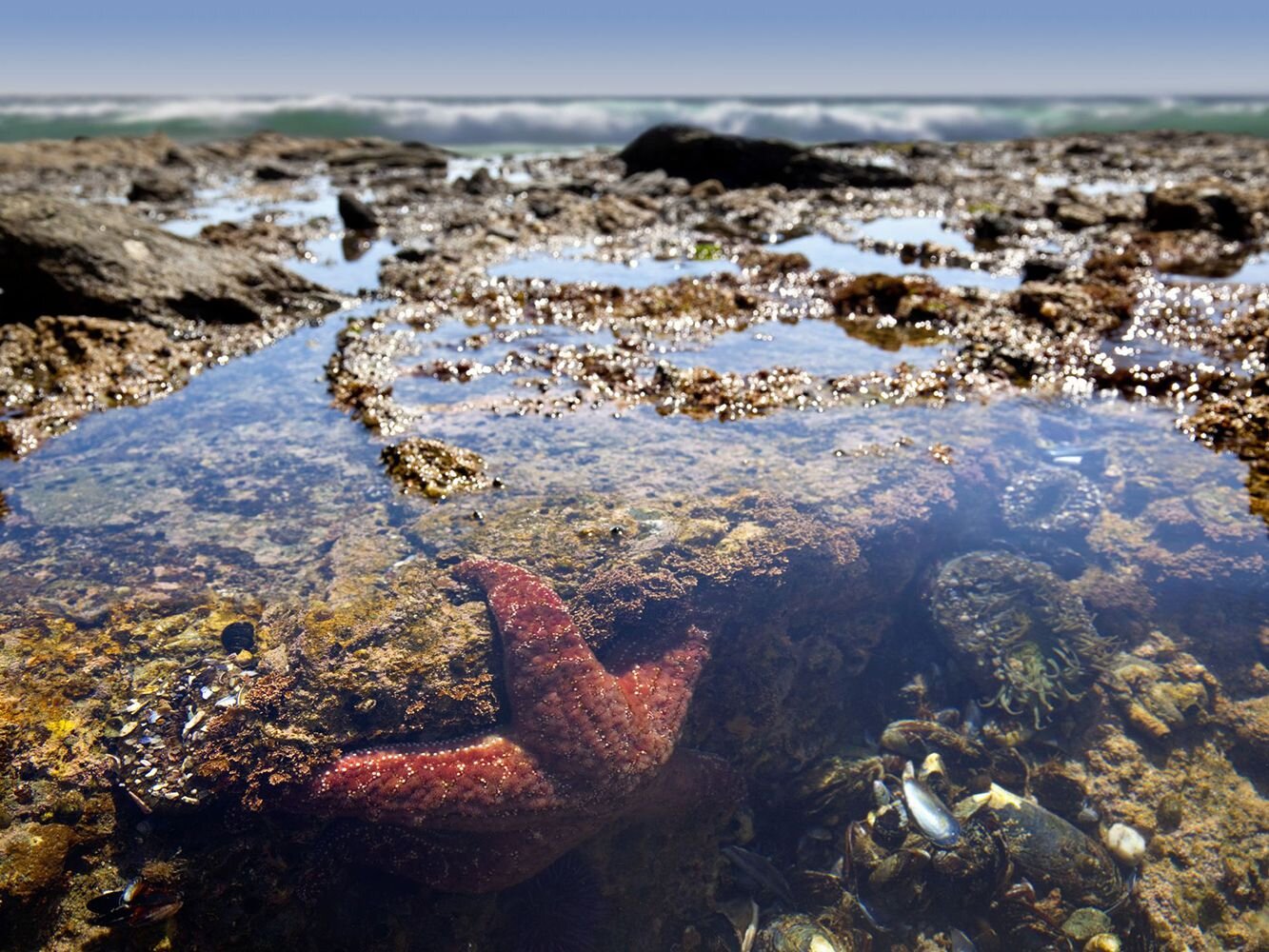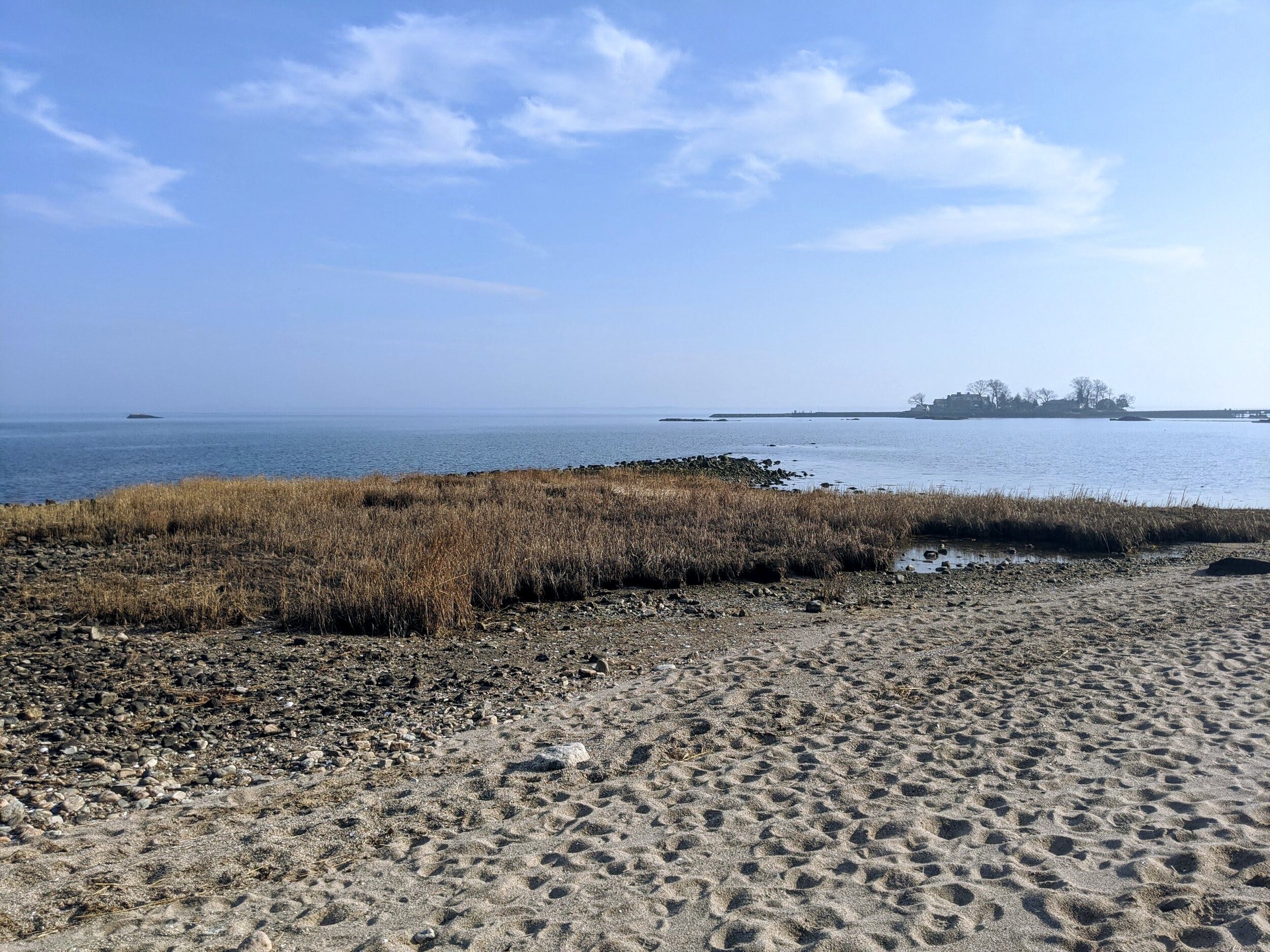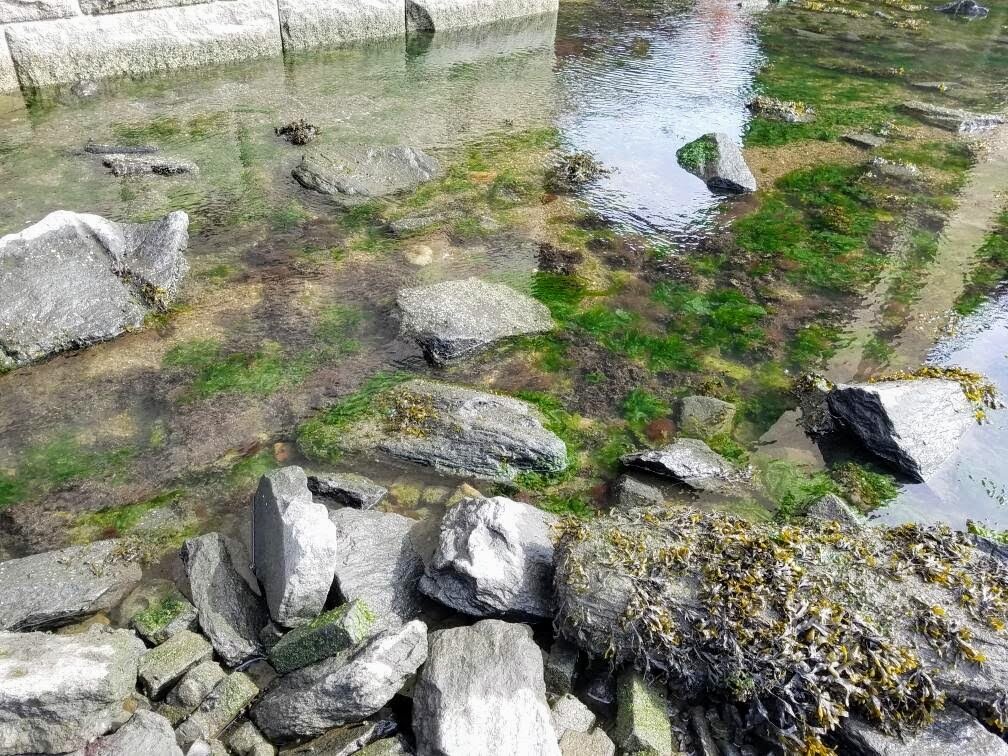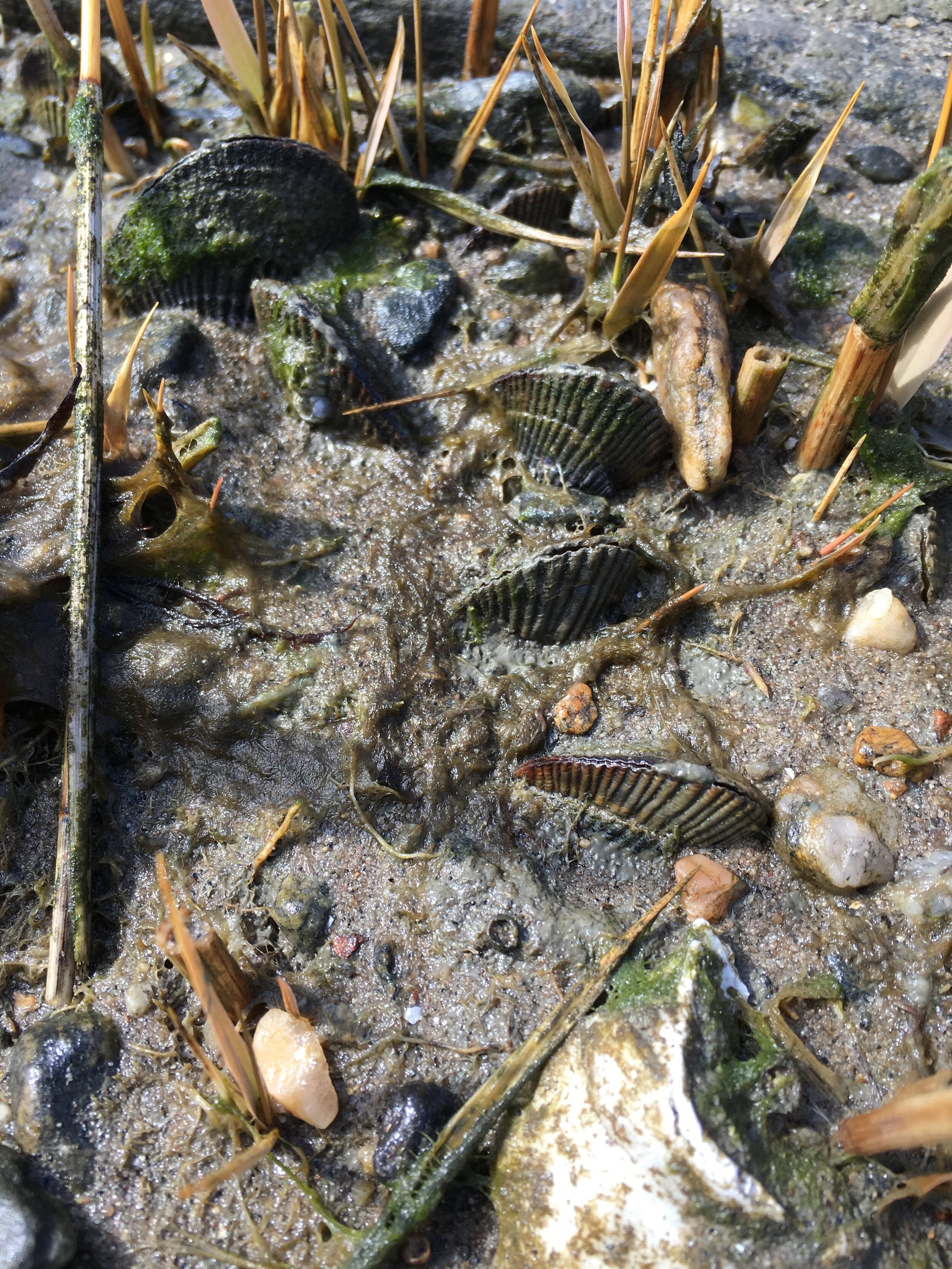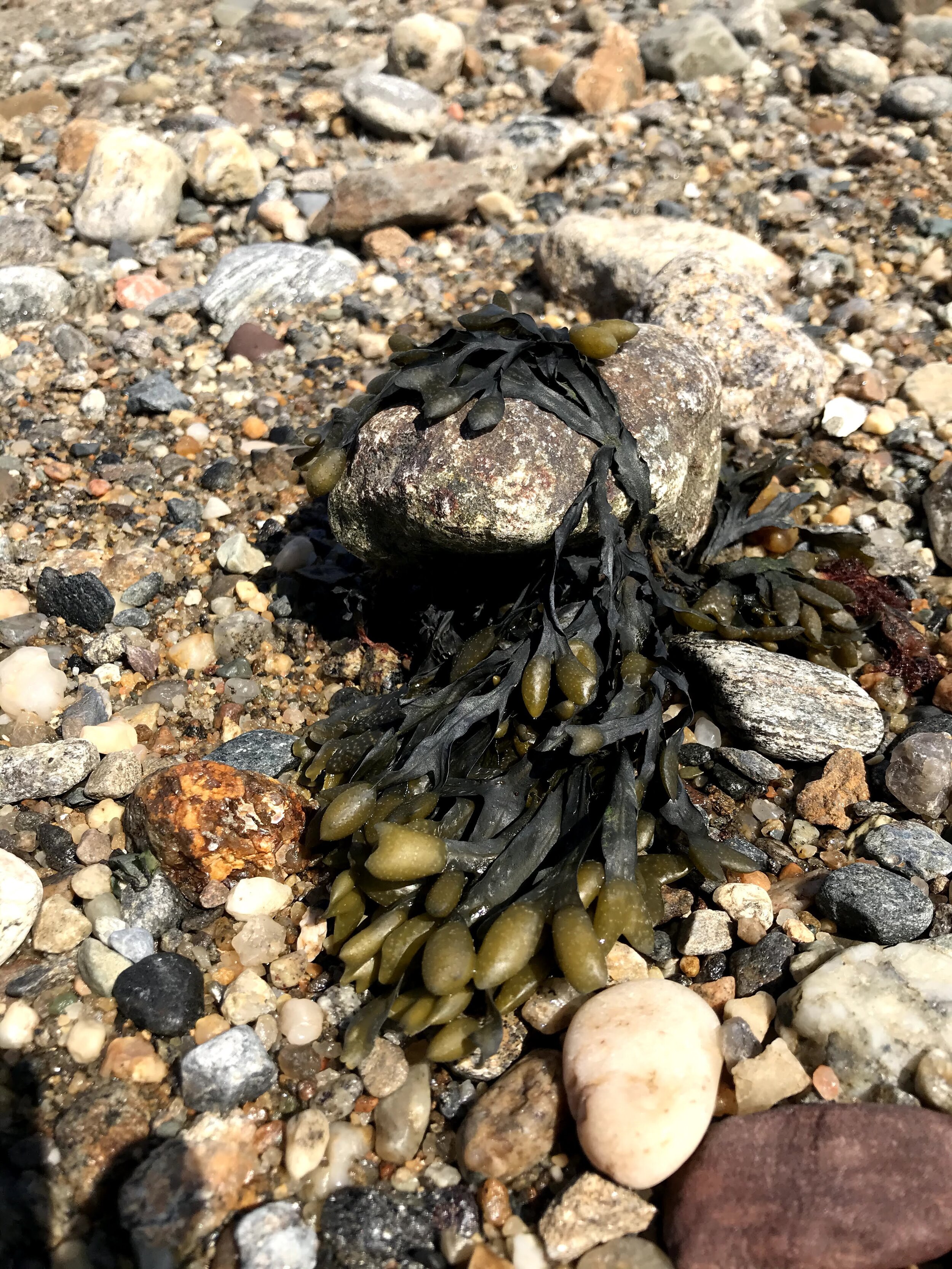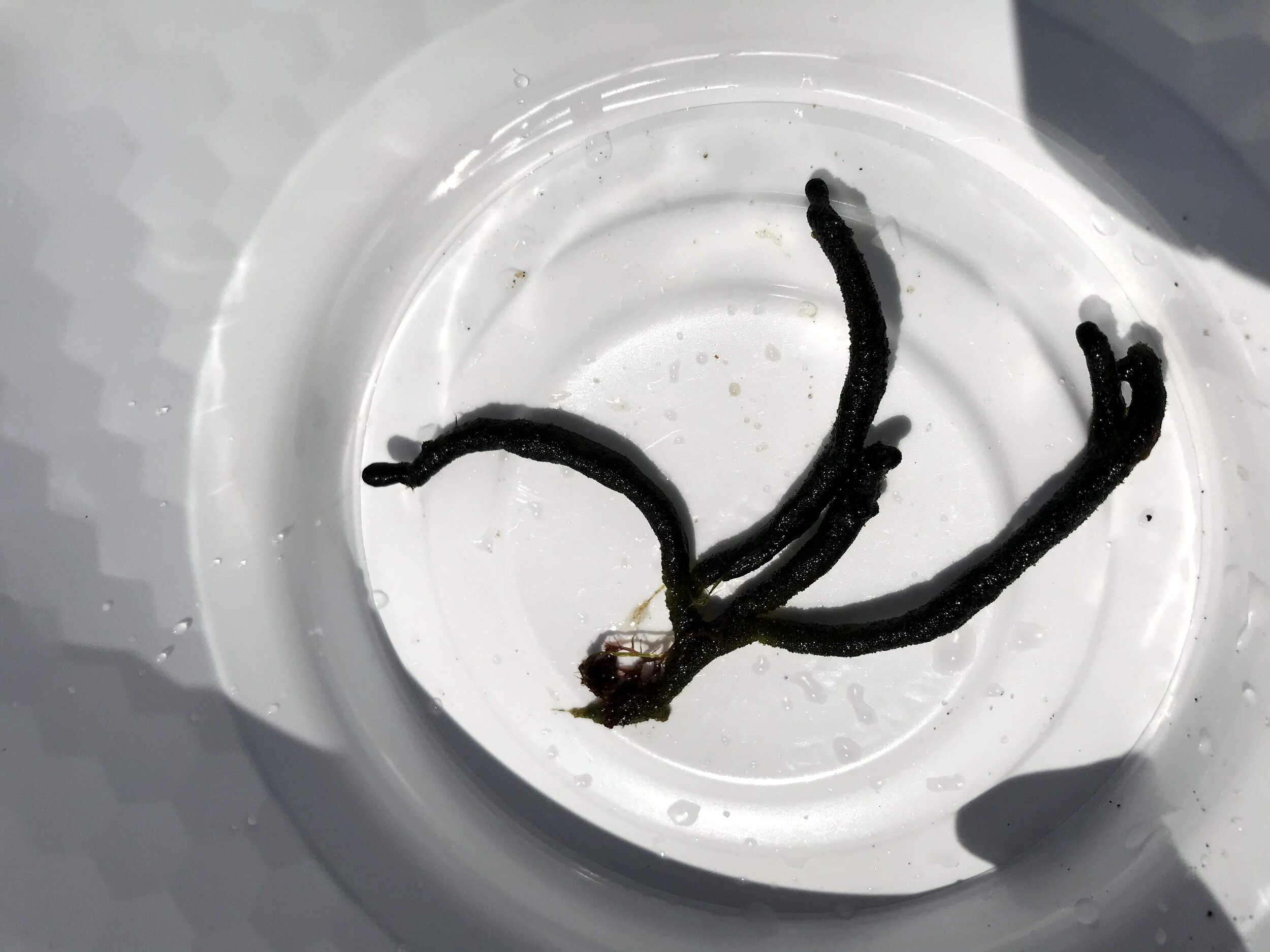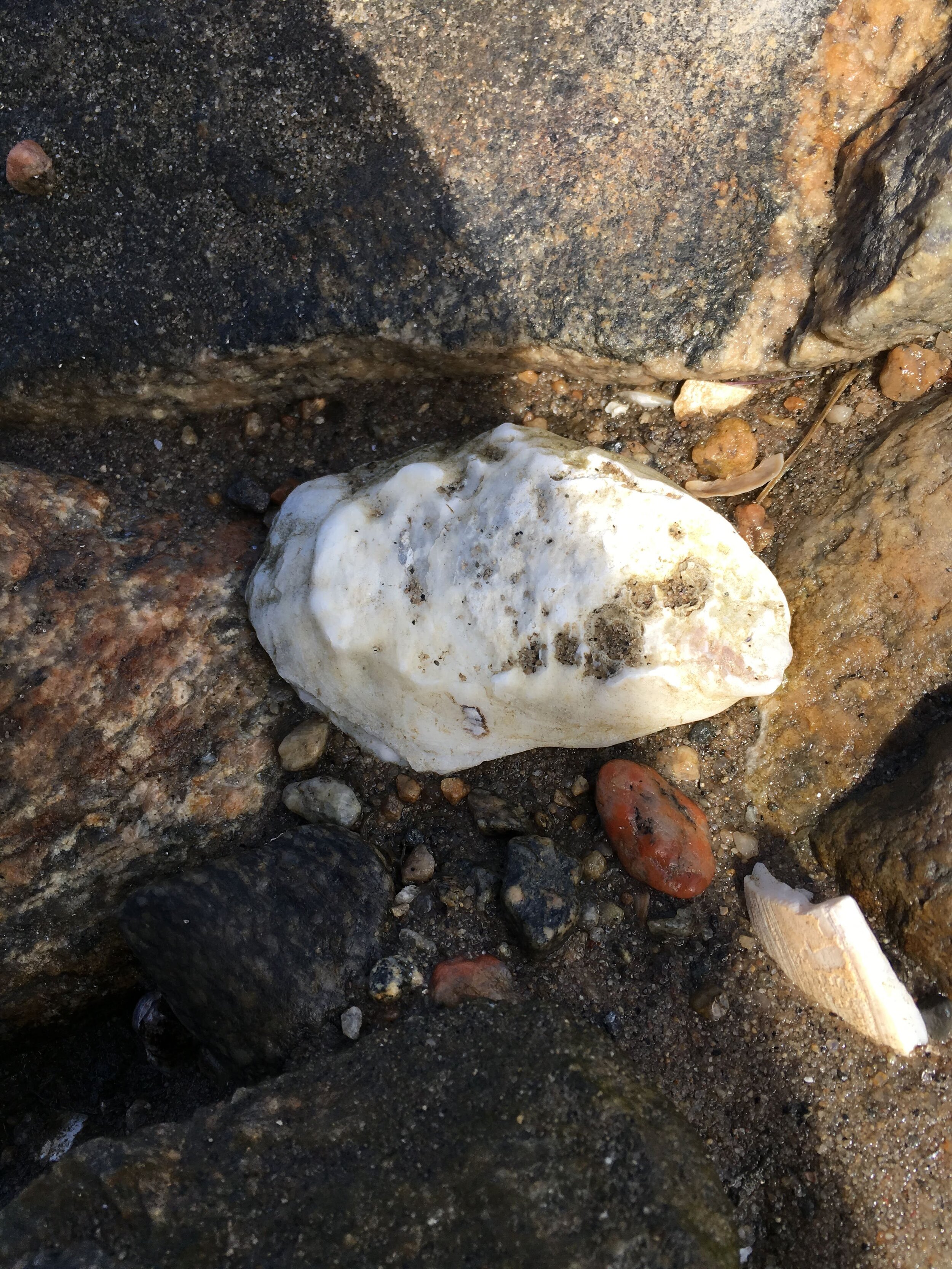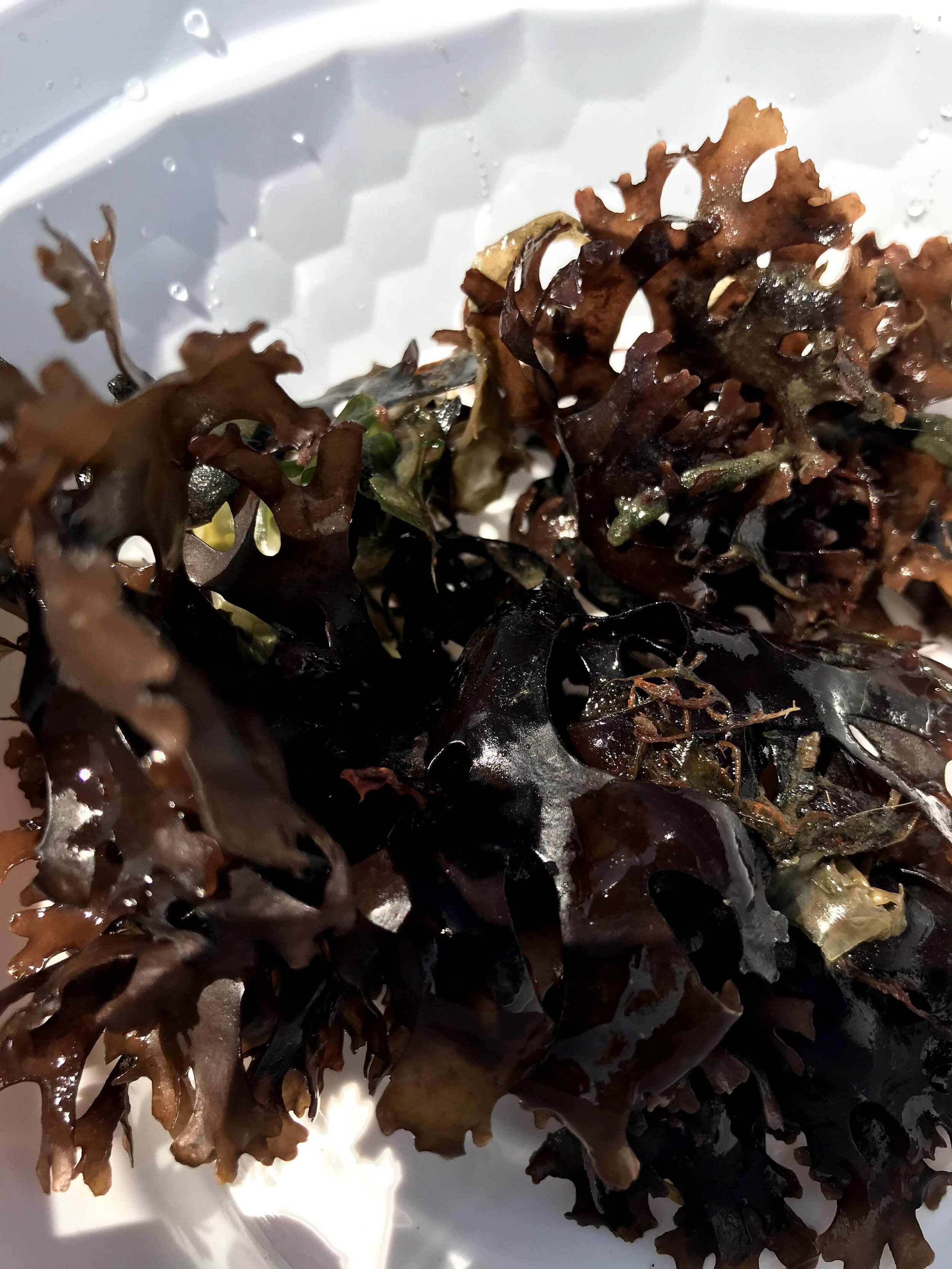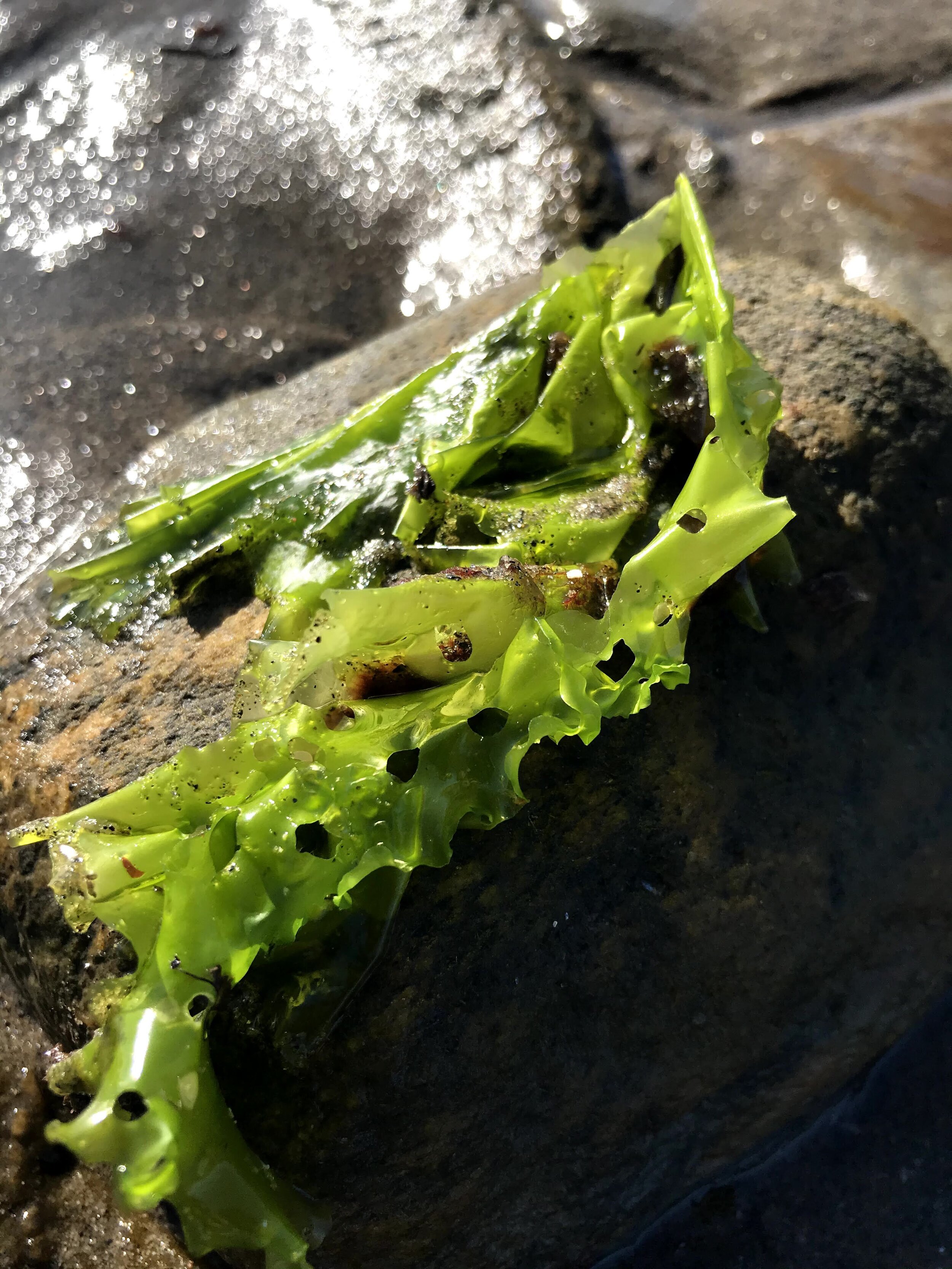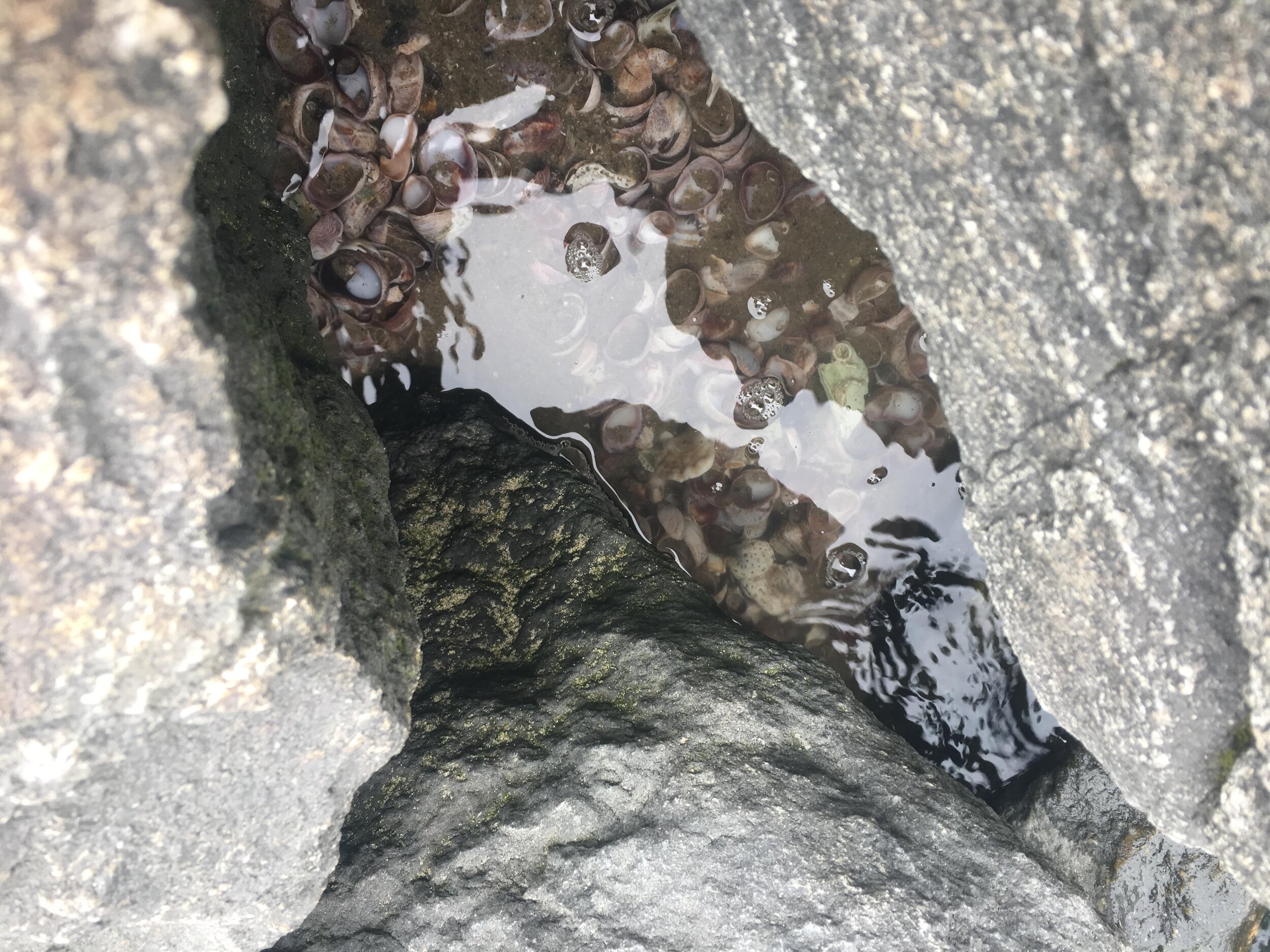Growing up in a landlocked state I did not have access to beaches. My family would try to plan at least one vacation a year and I always looked forward to the summers we would visit the beach. When I moved to New York City and began working in Rye, I felt so grateful to have access to the beach and ocean whenever I wished to visit. I came to discover that many of these coastal shores had another gift to offer...tidepools!
WHAT IS A TIDEPOOL?
Oceans are constantly moving. This movement is caused by the force of gravity from the moon and sun pulling on Earth’s oceans. These forces create tides. There are two types of tides-high tide (when water moves up onto the beach) and low tide (when the water goes back down). There are usually two high tides and two low tides per day.
When high tide comes, it brings water, plants, and animals with it. When the water goes back out at low tide, some of the water, plants, and animals get trapped in shallow spots in rocks or sand on the beach. This trapped water creates what is known as a tidepool and each tidepool has a whole community of different plants and animals living there.
TIPS & TRICKS FOR EXPLORING TIDEPOOLS
Know When to Plan Your Visit:
Low tide is the best time to explore tidepools. Check your local tide report to discover what time low tide will be that day. We recommend catching the early low tide if possible because this will likely mean there will be less people there. Less people means more space for you to safely social distance while you explore!
What You Can Find:
Try to brush up on marine life or take pictures of what you find so you can learn about them later. Here is a fun scavenger hunt with some common tide pool species!
What to Wear & Pack:
Sunglasses, hats, sunscreen, water shoes or rain boots, and a swimsuit or clothes that can get wet. A towel or extra clothes could be useful in case someone falls in!
Buckets, nets, and magnifying glasses (you can also make your own underwater viewer here) for exploring! Bring a camera so you can take pictures of what you find and identify them later.
Tread Lightly:
The last thing to note, and possibly the most important, always remember that tidepools are habitats and they are extremely sensitive. Damage to tidepools can happen easily, especially with young children. Teach your children to carefully make their way around the tidepools and be aware of what they’re stepping on and touching.
If you flip over rocks or shells be sure to place them back as they were-they provide shelter from predators for many species living in tidepools. Place any creatures that you remove in a bucket with water and return them to their homes as soon as possible. Many of them are very sensitive to even the smallest changes in temperature and oxygen.
Make sure that when you head home, you leave any marine life that you’ve found. Each animal, plant, rock, and shell serves an important purpose in these fragile habitats.
Have fun exploring and share your discoveries with us by tagging @RyeNatureCenter on Facebook or Instagram!
— Emily Embick, Environmental Educator


